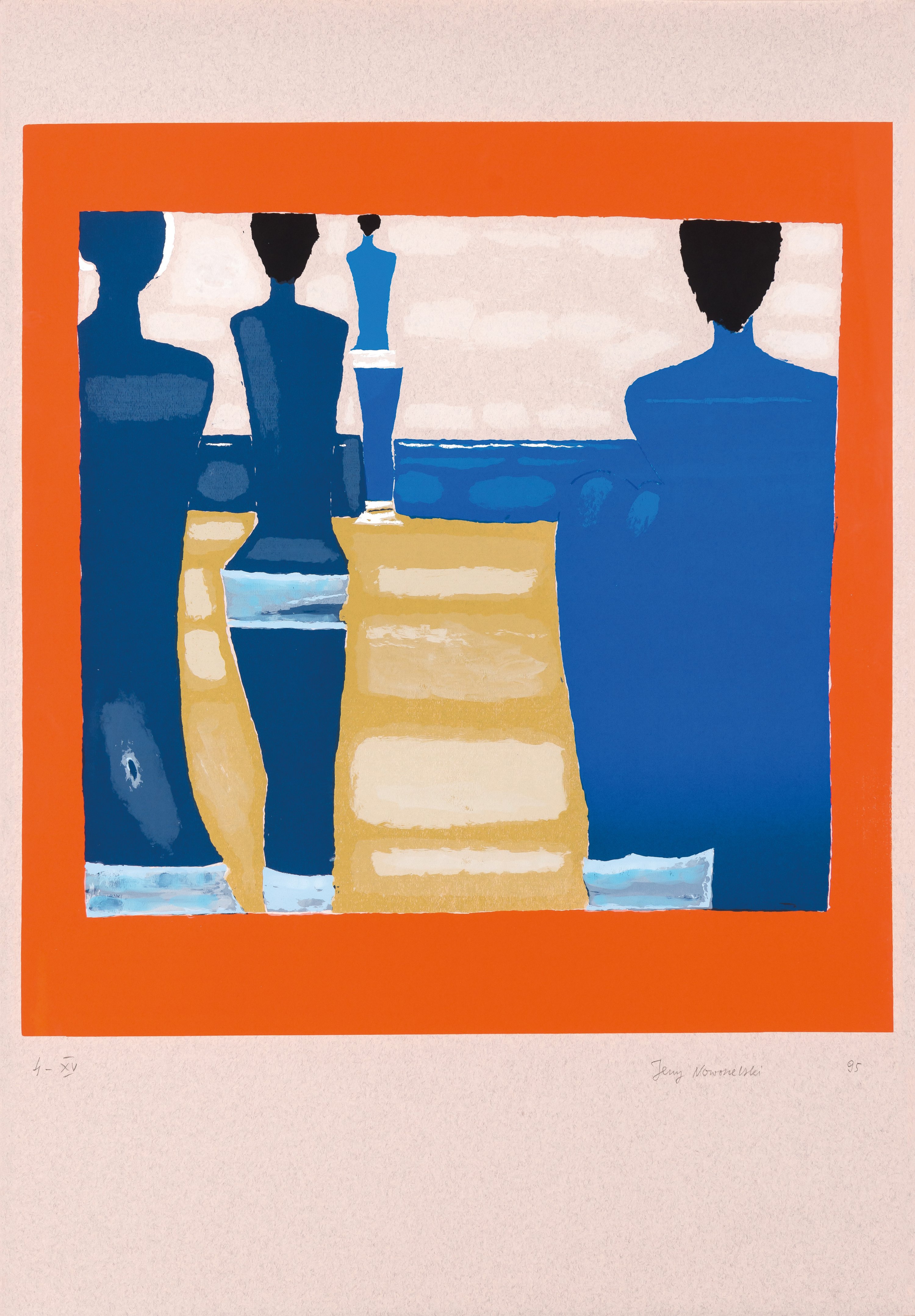Jerzy Nowosielski
untitled
FSP ING 0008
Jerzy Nowosielski’s painting is synthetic in nature, a quest for measures allowing the perception of man, art, harmony and beauty to be contained in a single composition. Attempts to obtain a complete image occasionally reach a stage where the figurative painting approaches the abstract, which is how the artist depicted feminine forms in his serigraphic cycle. Frozen in controlled poses, the slender figures are reduced to contours, their faces remaining unseen. The limited colour palette, use of light reflections, and zonal artwork composition are all typical of Nowosielski’s style, which speaks of Byzantine icon and European sacral art inspirations.
Jerzy Nowosielski
b. 1923, Kraków – d. 2011, Kraków
Painter. A graduate of the Academy of Fine Arts in Kraków. His essential inspirations in painting included Eastern Orthodox doctrine and iconographic traditions. Drawing on their technique, balanced composition and minimalist lines, he also researched and described them in theoretical writings. He created numerous polychromies at Orthodox and Roman Catholic churches in Poland. He was a member of the Second Kraków Group. He represented Poland at the 28th Venice Biennale (1956) and the São Paulo Art Biennial (1959). He was decorated with the Grand Cross of the Order of Polonia Restituta (2013) and the supreme order of the Orthodox Church in Poland, the St. Mary Magdalene Medal Second Class (1985), and awarded an honorary doctorate by Jagiellonian University. He joined his wife in establishing the Nowosielski Foundation supporting young artists in 1996. He lived and worked in Kraków.
b. 1923, Kraków – d. 2011, Kraków
Painter. A graduate of the Academy of Fine Arts in Kraków. His essential inspirations in painting included Eastern Orthodox doctrine and iconographic traditions. Drawing on their technique, balanced composition and minimalist lines, he also researched and described them in theoretical writings. He created numerous polychromies at Orthodox and Roman Catholic churches in Poland. He was a member of the Second Kraków Group. He represented Poland at the 28th Venice Biennale (1956) and the São Paulo Art Biennial (1959). He was decorated with the Grand Cross of the Order of Polonia Restituta (2013) and the supreme order of the Orthodox Church in Poland, the St. Mary Magdalene Medal Second Class (1985), and awarded an honorary doctorate by Jagiellonian University. He joined his wife in establishing the Nowosielski Foundation supporting young artists in 1996. He lived and worked in Kraków.
